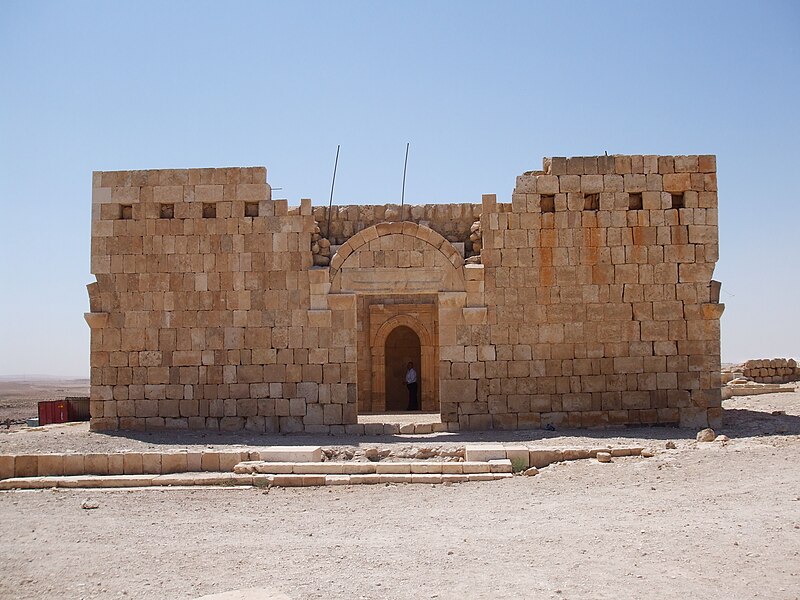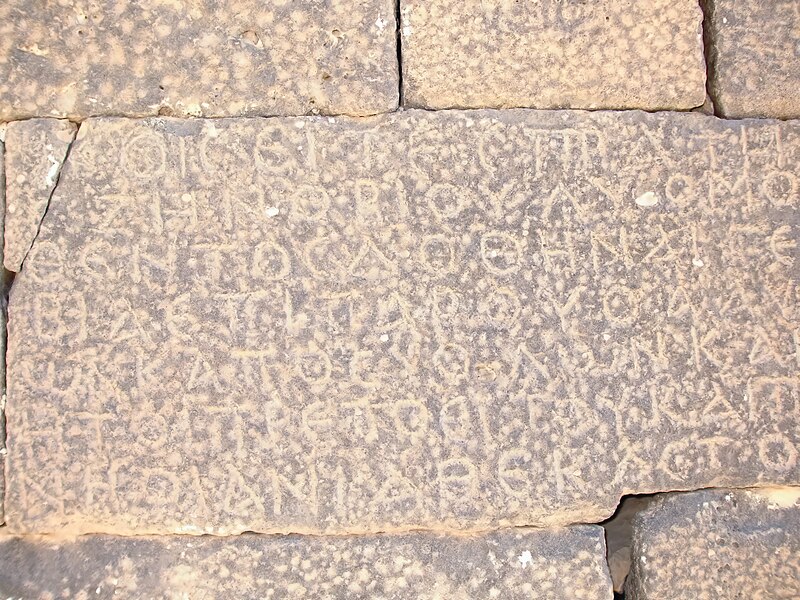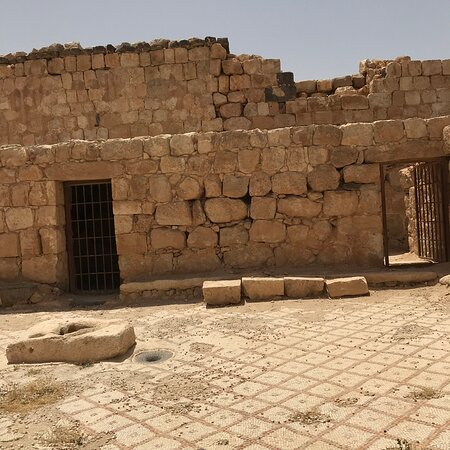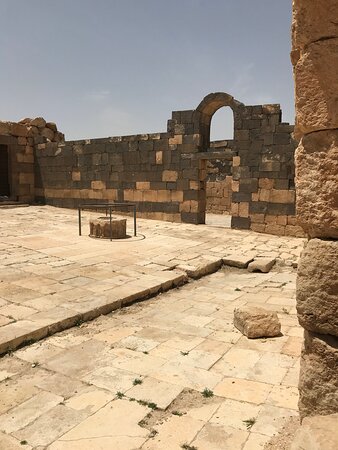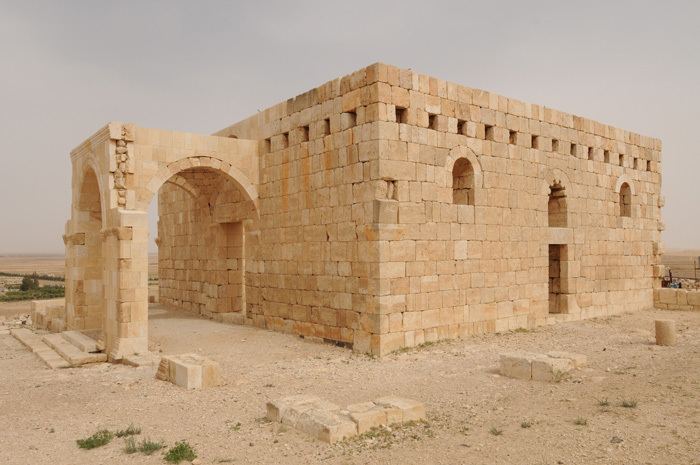Qasr al-Hallabat
Qasr al-Hallabat (Arabic: قصر الحلابات) is an Umayyad desert castle, with the associated bath house of Hammam as-Sarah east of it. The nearby modern town, named after the castle, is part of the Zarqa Governorate of north-western Jordan, north-east of the capital of Amman. History The complex of Qasr al-Hallabat is located in Jordan's eastern desert. Originally a Roman structure constructed in the 2nd-3rd century AD to protect the eastern frontiers of the Roman Empire, although there is trace evidence of Nabatean presence at the site.It was one fort of many on the Roman highway, Via Nova Traiana, a route that connected Damascus to Aila (modern-day Aqaba) by way of Petra and Philadelphia (modern-day Amman) In the 6th century, the fort was ceded to the Ghassanids as part of the foedus treaty with the Byzantine emperor Justinian. The Ghassanids significantly altered the structure and constructed a monastery. By the 8th century, the Umayyad caliph Hisham ibn Abd al-Malik ordered the structures to be demolished in order to redevelop this military site and its neighboring territory to become one of the grandest of all Umayyad desert complexes. Umayyad complex Guided by the extant plan,[dubious – discuss] Hisham incorporated a mosque (situated 15 meters southeast of the main structure), a complicated water system including five cisterns and a considerably large water reservoir, and a bathhouse.Furthermore, situated to the west of the palace remains an enclosed structure probably used for agricultural purposes such as cultivating olive trees and/or grapevines, of which only a one-layered stone footprint is still standing. The main palace is built of dark and light stone, basalt and limestone, and has a square floor plan with towers at each corner.Grand in stature, the principal structures were further enhanced with decorative mosaics depicting an assortment of animals, detailed frescoes and highly crafted stucco carvings.The site remains to be completely restored
